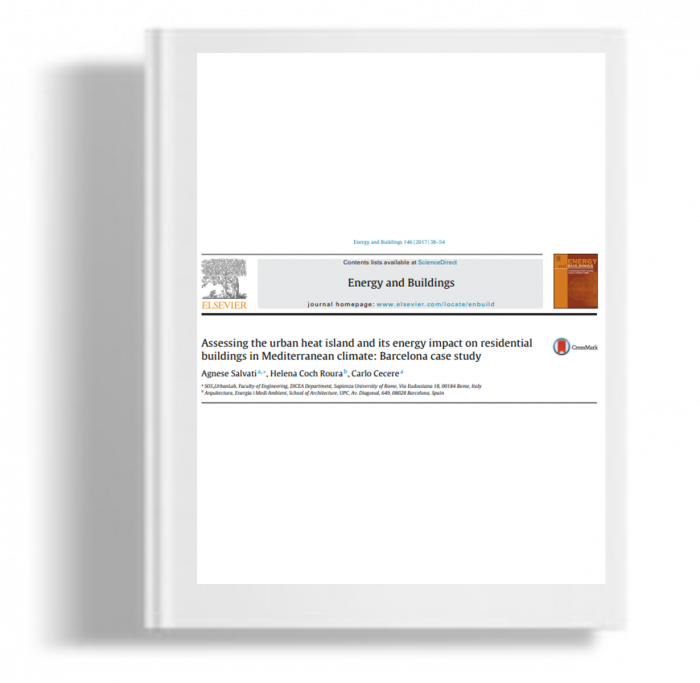Kami menggunakan cookies untuk membuat pengalaman Anda lebih baik. Untuk mematuhi petunjuk e-Pribadi yang baru, kami perlu meminta persetujuan Anda untuk menyetel cookies. Pelajari lebih lanjut .
Assessing the urban heat islan and its energy impact on residential buildings in mediterranean climate : barcelona case study
This study investigates the intensity of UHI in Barcelona (Spain), the densest Mediterranean coastal city, and its impact on cooling demand of residential buildings. The experimental analysis is based on temperature data from rural and urban Weather Stations and field measurements at street level. The maximum average UHI intensity is found to be 2.8 ◦C in winter and 1.7 ◦C in summer, reaching 4.3 ◦C at street level. Simulations performed with EnergyPlus indicate that the UHI intensity increases the sensible cooling load of residential buildings by around 18%–28%, depending on UHI intensity, amount of solar gains and cooling set point. In the light of the results, the UHI intensity in Mediterranean context should be properly considered in performing energy evaluations for urban contexts, since standard meteorological data from airport weather stations are not found to be accurate enough.
This study investigates the intensity of UHI in Barcelona (Spain), the densest Mediterranean coastal city, and its impact on cooling demand of residential buildings. The experimental analysis is based on temperature data from rural and urban Weather Stations and field measurements at street level. The maximum average UHI intensity is found to be 2.8 ◦C in winter and 1.7 ◦C in summer, reaching 4.3 ◦C at street level. Simulations performed with EnergyPlus indicate that the UHI intensity increases the sensible cooling load of residential buildings by around 18%–28%, depending on UHI intensity, amount of solar gains and cooling set point. In the light of the results, the UHI intensity in Mediterranean context should be properly considered in performing energy evaluations for urban contexts, since standard meteorological data from airport weather stations are not found to be accurate enough.

